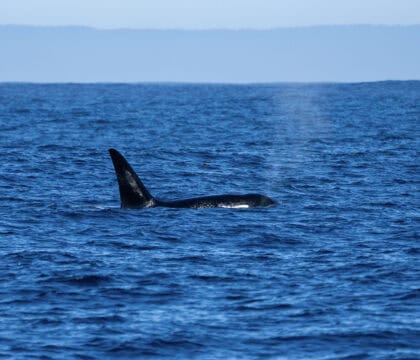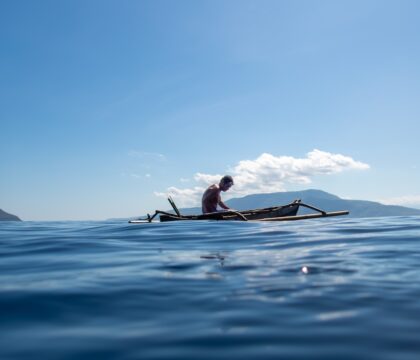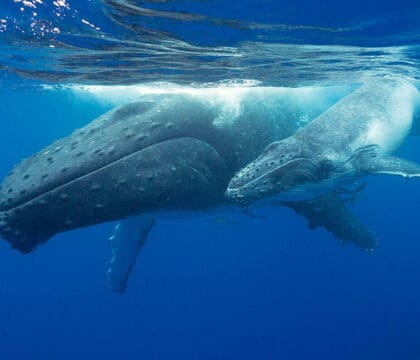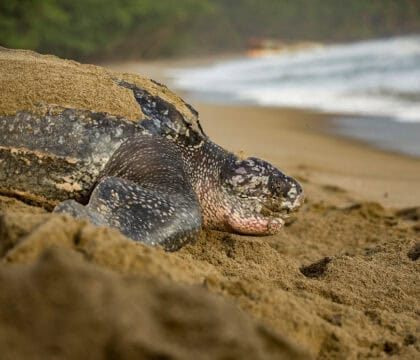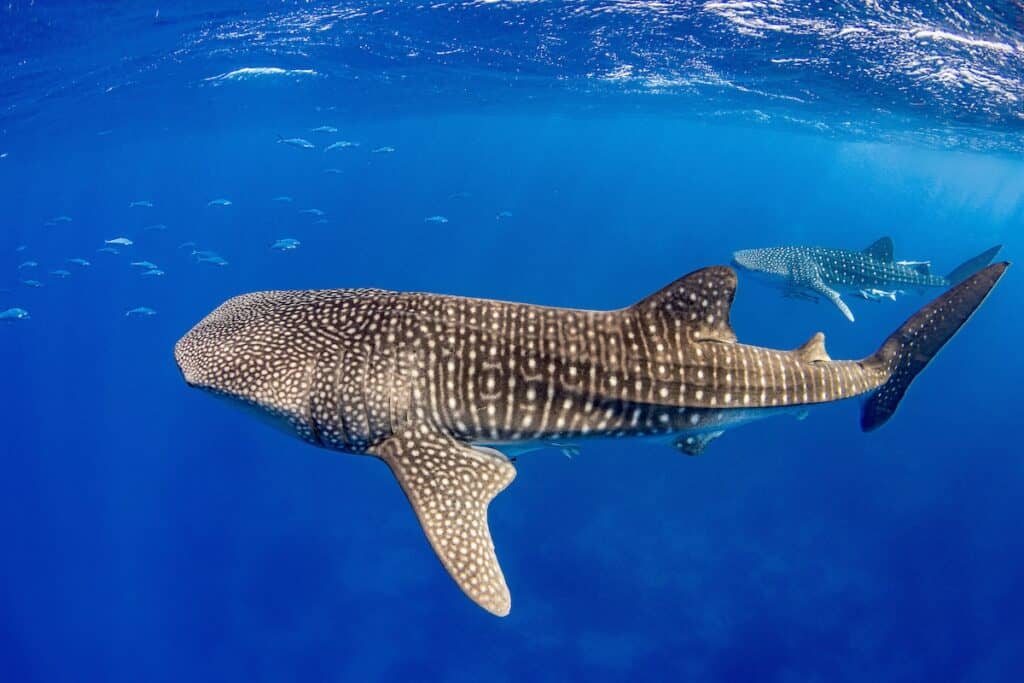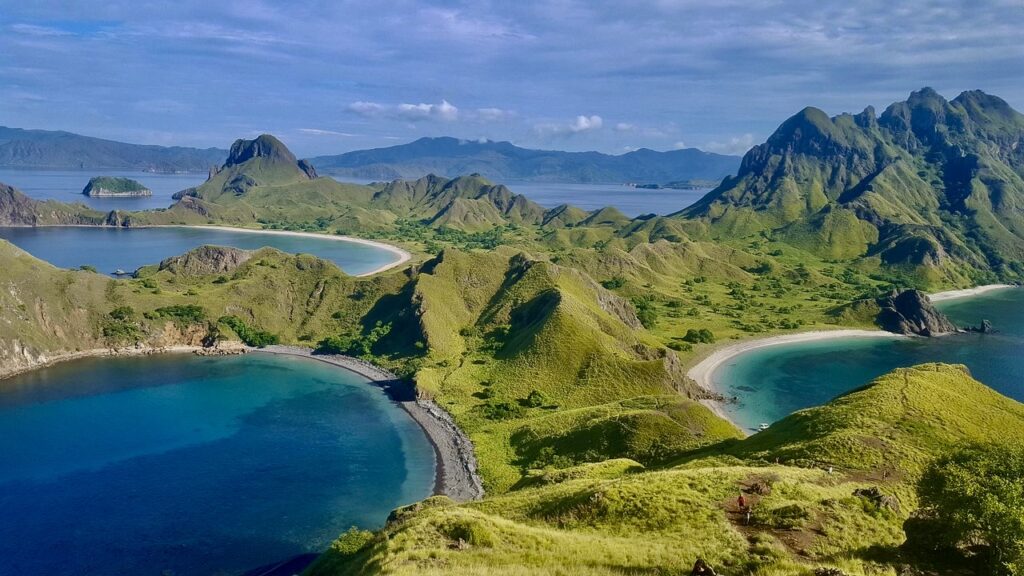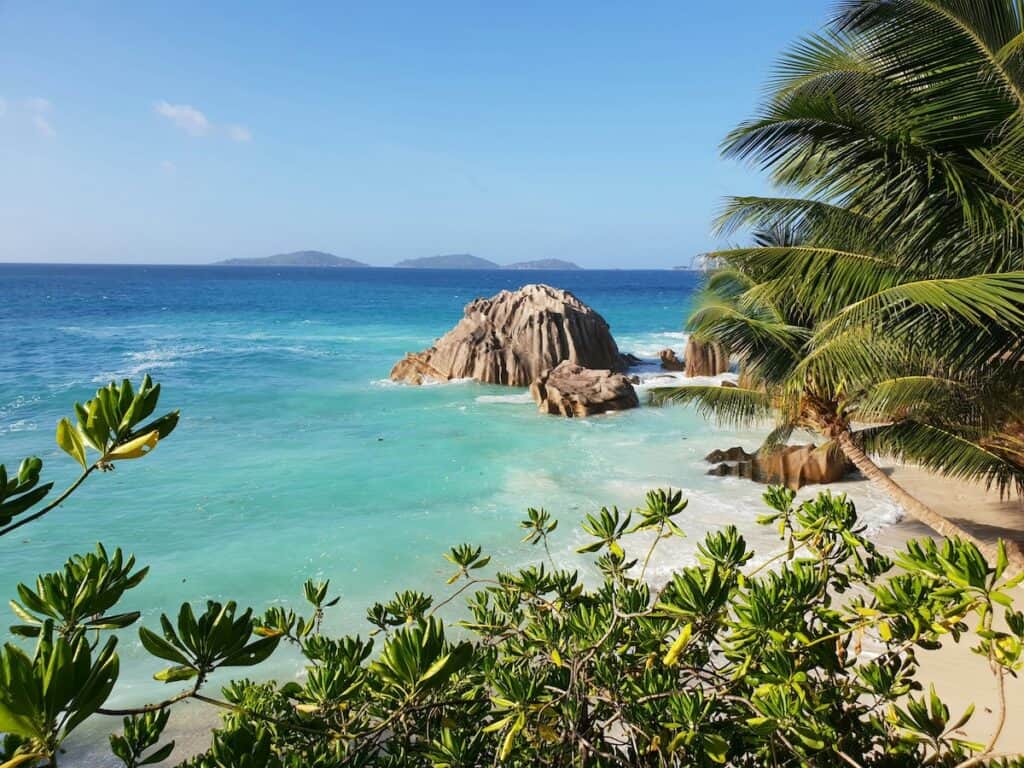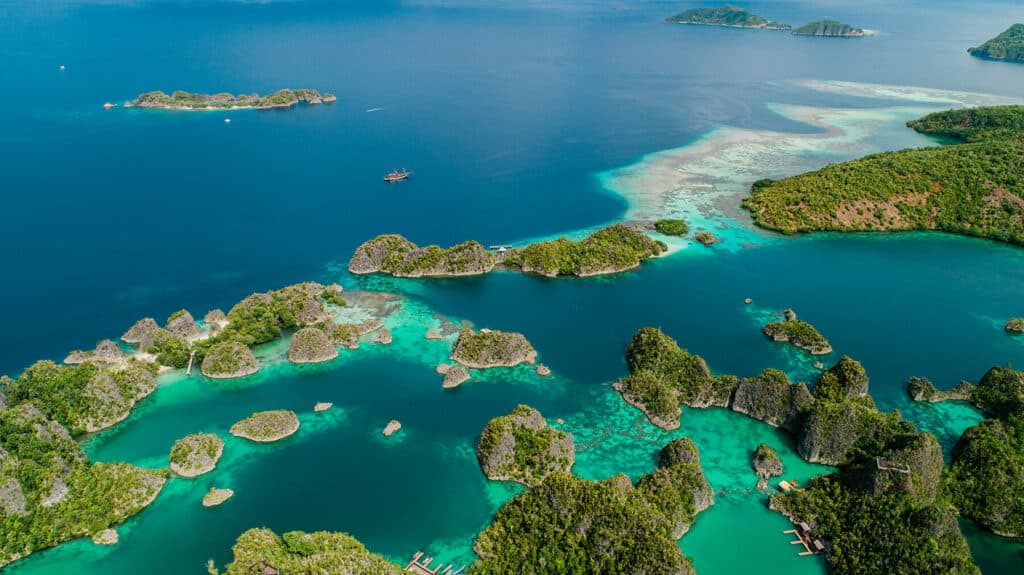June 11, 2025 • Trip Reports
The vessel, named the Bilikiki, the “big canoe” in the local Pidjin, has been gliding through the seas of the Solomon Islands for nearly 40 years. By liveaboard standards, it is a veteran, but the crew assures me few crafts are as smooth, and few as trusted by the local dolphins.
“They’re used to the sound of the engine,” Benjamin Kahn, a marine ecologist with Oceanic Society’s partner, Planet Deep, explains to me as we scan the mirror-like waters looking for a breach of a dorsal fin. Cetaceans, like whales and dolphins, can be noise sensitive, so the familiar hum of the Bilikiki helps entice them to interact. Until recently, the Bilikiki was the only liveaboard plying these remote waters.
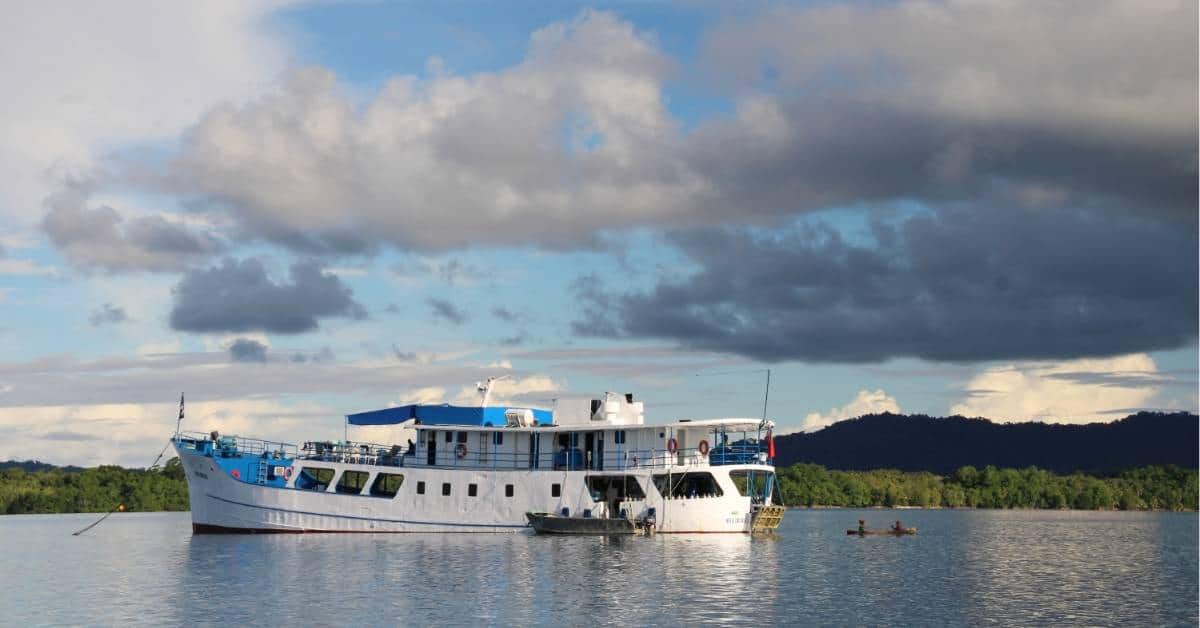
For nearly 40 years, the Bilikiki was the only liveaboard vessel taking tourists to the remote corners of the Solomon Islands. © Zach Theiler
Then a crew member lets out an excited shout and points to the distance: a dolphin spins through the air near the coast of a mangrove-clad island. Travelers rush to the deck with a buzz of excitement as a dozen spinner dolphins careen towards the Bilikiki.
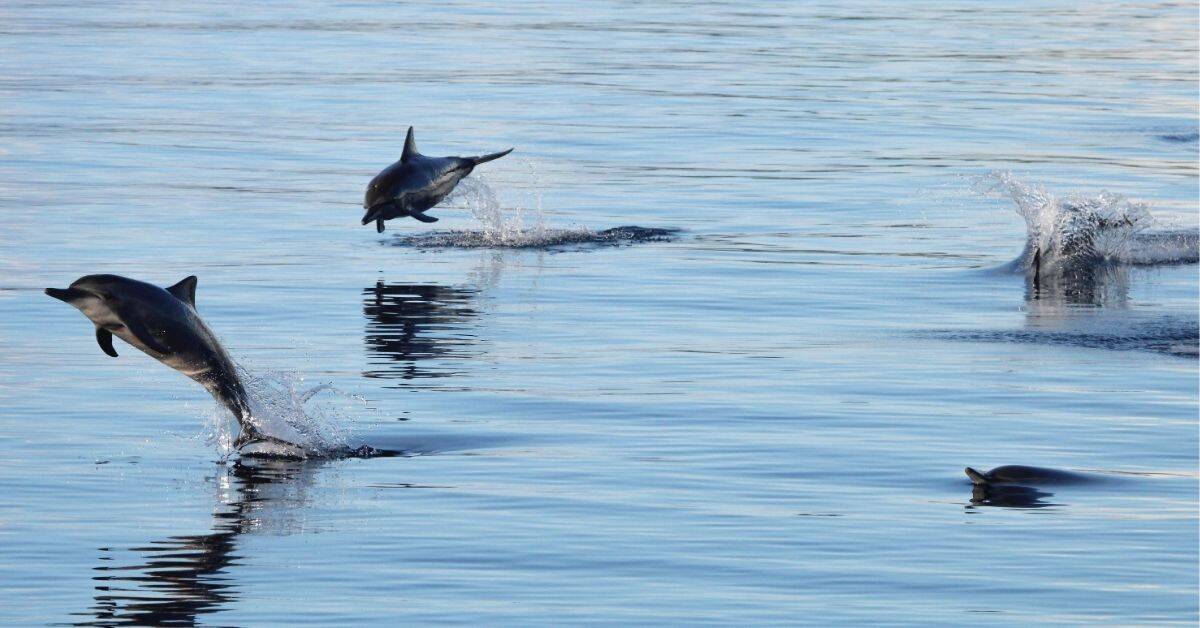
A group of spinner dolphins, having noticed the Bilikiki, surge towards the bow of the boat to surf the wake in a behavior known as “bow-riding”. © Zach Theiler
The pod quickly doubles, then triples in size as more and more dolphins are alerted to our presence. We watch in stunned awe as dolphins rapidly descend upon the Bilikiki, like torpedoes, making their way to the bow of the boat to ride the wake – a behavior known as bow-riding.
Despite the enthusiasm to interact with our boat, Benjamin carefully directs our vessel. “You can’t just assume that the dolphins are going to bow-ride,” he says as more dolphins gather in mass to surf the bow. “So you come in slow, then you sort of tease them a little bit. Are they curious? Do they want to play with the boat or not?” As the dolphins fly through the air riding on the rapidly circulating waters, Benjamin waves for the captain of the Bilikiki to increase the speed. As the wake of the bow grows, so does the fun for the dolphins.
Benjamin points to a pair of dolphins bounding towards the vessel in close formation. “You see the calves are coming along, that’s a good sign,” he says, “the mother is comfortable enough to show the calves how it’s done.”
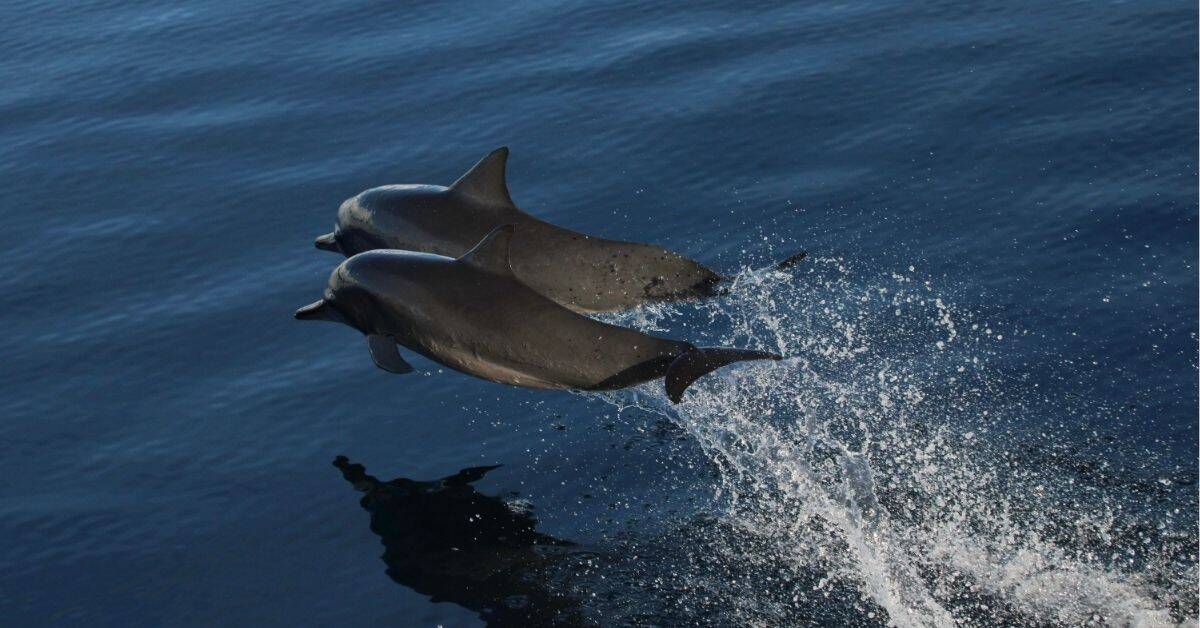
A mother and calf spinner dolphin flying up to the bow of the vessel to join dozens of others surfing the wake. © Zach Theiler
I stand along the railing of the boat watching in wonder as dolphins surge along the wake of the bow. Meanwhile, we cruise between seemingly countless uninhabited islands that dot the seascape. In these remote islands, where over half of the 992 islands are uninhabited, dolphins regularly found the Bilikiki during our expedition, indulging in bow-riding with the exuberance of a pack of children charging to a playground.
Even when we were not patrolling the waters of the Solomons in search of cetaceans, dolphins seemed to find us. While in the Marovo-Lagoon, the largest enclosed reef system in the world, a pod of playful spinner dolphins decided to bow-ride the zodiacs as travelers made their way to coral reefs to snorkel.
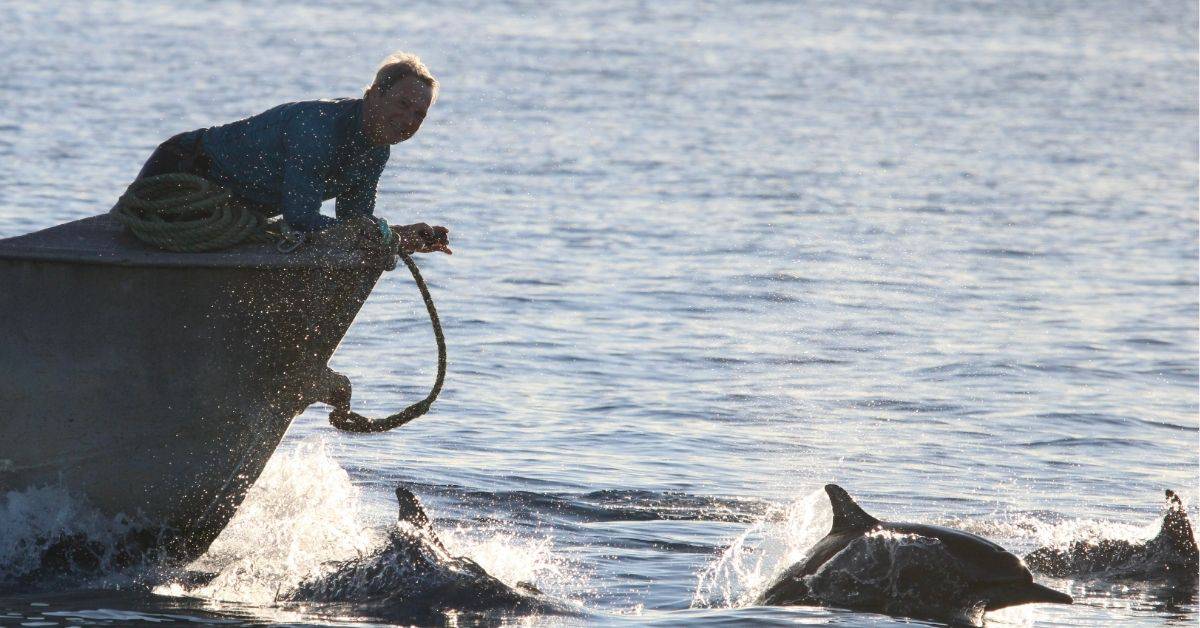
An Oceanic Society traveler at the front of a zodiac with a pod of spinner dolphins bow-riding in the Solomon Islands. © Zach Theiler
Each time I watched these remarkable creatures that showed no fear of humans, I was filled with a sense of inter-connection. In the ultra-remote waters of the Solomons, which bear little mark of modern civilization, perhaps we glimpsed what could have been had our species chosen a more symbiotic relationship with the ocean.
Something many photographers struggle with is when to lower the lens and simply embrace the moment. Intimate interactions with wildlife are becoming rarer in the age of the Anthropocene. As compelling as it is to immortalize these moments with a photograph, as time went on, I found myself looking less through the viewfinder and instead watching, without distraction, and letting the memories soak in at a deep level. This is what eco-tourism asks of us: to escape the world of materialism and achievement, and remember our place in nature. These experiences can reshape how we live our lives, and will live with us long after we return home.
Ideal Conditions for Bow-riding Dolphins
Scientists have speculated that bow-riding could be explained as an efficient means of traveling, but the consensus is that dolphins bow-ride simply to have fun. Dolphins are famously playful. Bow-riding, in the right conditions, can be a common interaction between boats and dolphins – creating a magical moment of connection between humans and the natural world.
As Benjamin demonstrated, treating the dolphins gently and enticing them to the boat – rather than “crashing into their world”, as he puts it – made for ideal conditions, often luring pods with more than 100 dolphins at a time to come interact with the boat.
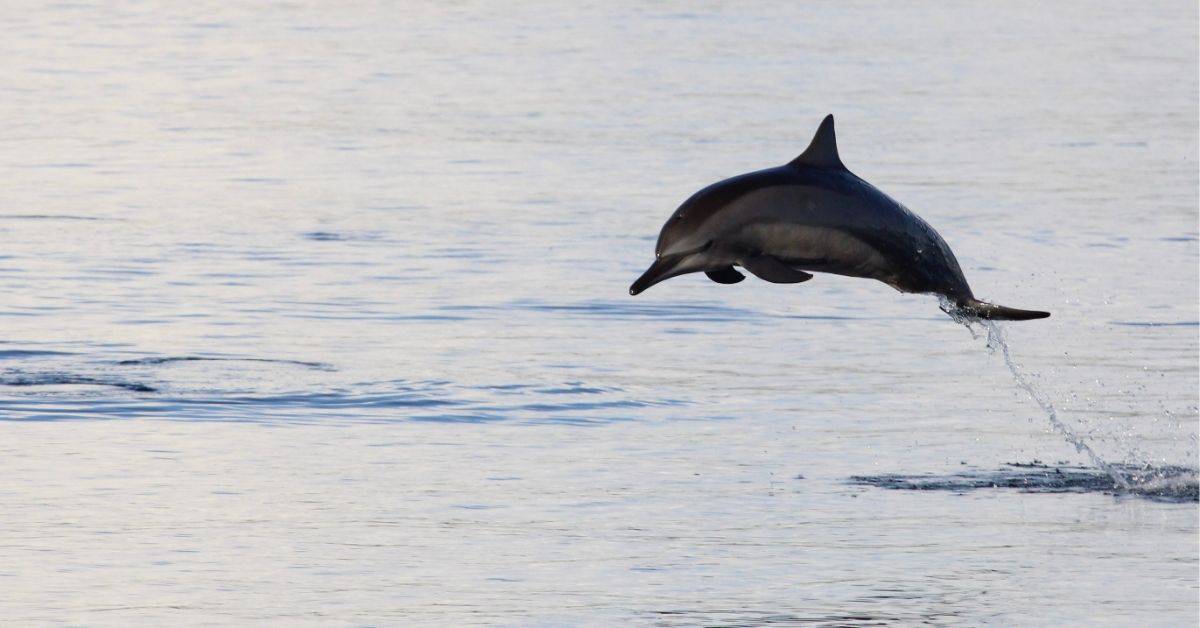
A spinner dolphin leaping towards the bow of a boat to surf the wake in the Solomon Islands. © Zach Theiler
Perhaps the most important criterion for experiencing bow-riding dolphins is to travel to a part of the world where dolphins are most abundant. The Solomon Islands are defined by mangrove-clad islands, sprawling coral reefs, and deep ocean channels that cut close to the coastline. This blending of environments creates the second-most biodiverse marine ecosystem in the world, and along with it, ideal conditions for dolphins. Many species of dolphins migrate through ocean channels, feed on species in these deep waters like squid, and rest in the shallower coastal environments during the day.
The Solomon Islands, which lie within the fabled Coral Triangle, a region famous for its healthy coral reefs and flourishing array of wildlife, is home to a variety of dolphin species, all of which are known to bow-ride. Spinner, spotted, common bottlenose, striped, Fraser’s, and even orcas – the largest member of the dolphin family, though they are less likely to bow-ride – can all be seen in the coastal waters of the Solomons.
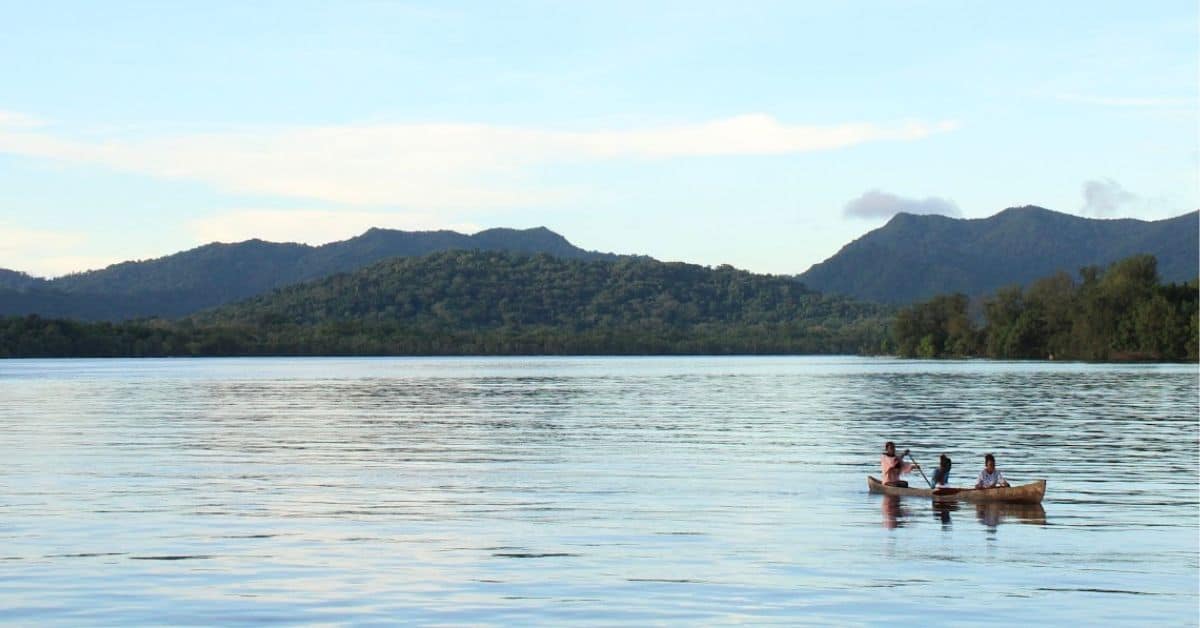
Only ~800,000 people live across over 992 islands in the Solomons, more than half of which are uninhabited, creating an ultra-remote environment that is perfect for viewing dolphins and experiencing bow-riding. © Zach Theiler
The combination of abundant dolphins and relatively few people scattered across the archipelago creates a dynamic in which dolphins are likely to view humans as interesting and nonthreatening, laying the foundation for bow-riding and a special moment with the natural world.
Supporting Conservation with Ecotourism
In many ways, the ultra-remote Solomon Islands tease the imagination. It is said that locals long described the Omura’s whale before it was “officially discovered” in 2003. Recently, a group of researchers accidentally discovered the largest coral colony in the world, which can be seen from space. But despite these anecdotes, and despite being regarded as the second-most biodiverse marine ecosystem in the world, securing funding for marine research in remote regions like the Solomons is notoriously expensive and difficult, Benjamin explains.
But teaming up with Oceanic Society and joining an ecotourism expedition to the most remote corners of the Solomon Islands allows him to survey cetacean activity while guiding travelers to snorkeling and other wildlife hotspots. The data collected from these impromptu cetacean surveys support conservation and advocacy efforts, including the establishment of Marine Protected Areas – some of the strictest legal protection that can be offered to a marine habitat.
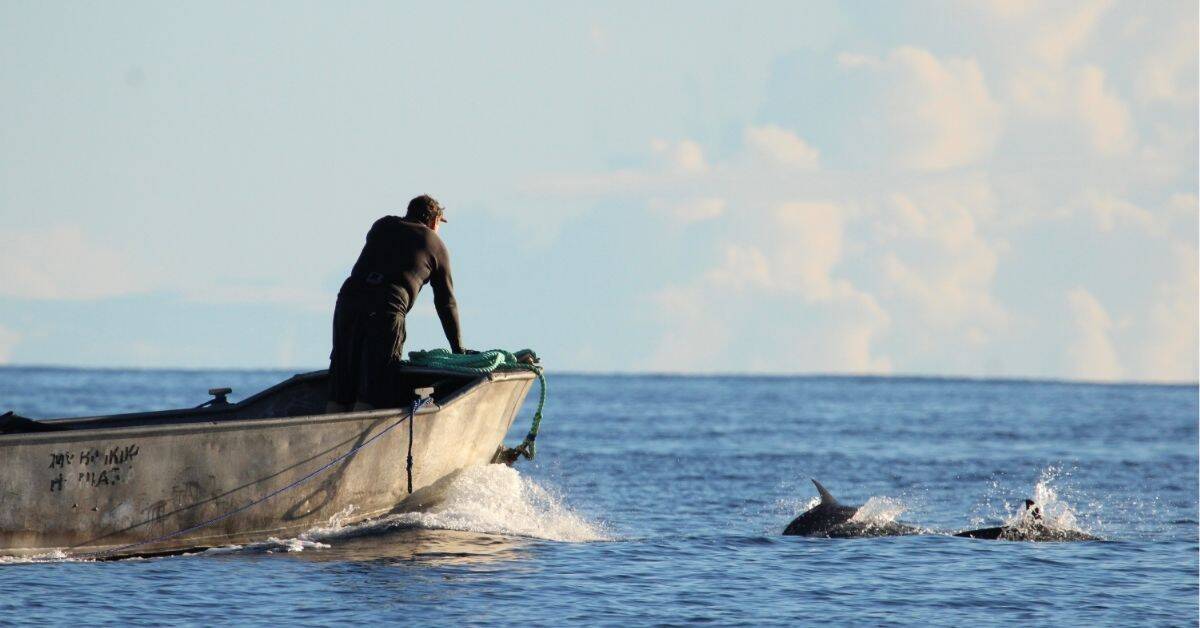
Benjamin Khan surveying a group of dolphins near the Marovo Lagoon, Solomon Islands © Zach Theiler
Oceanic Society brings together a community of like-minded individuals dedicated to supporting the ocean. For travelers, an experience like bow-riding dolphins can result in a deeper connection to the world and renewed commitment to protect it. But these trips also support a wide variety of research and conservation partners, from small sea turtle conservation efforts to researchers like Benjamin, who are on the front lines of environmental conservation. As an added bonus, every booking with Oceanic Society directly sponsors the removal of 200 pounds of ocean plastic waste, further supporting our global ocean conservation efforts.

